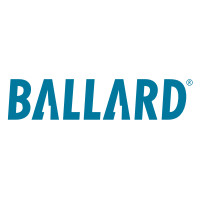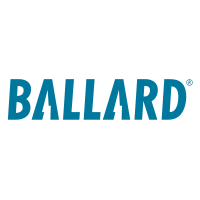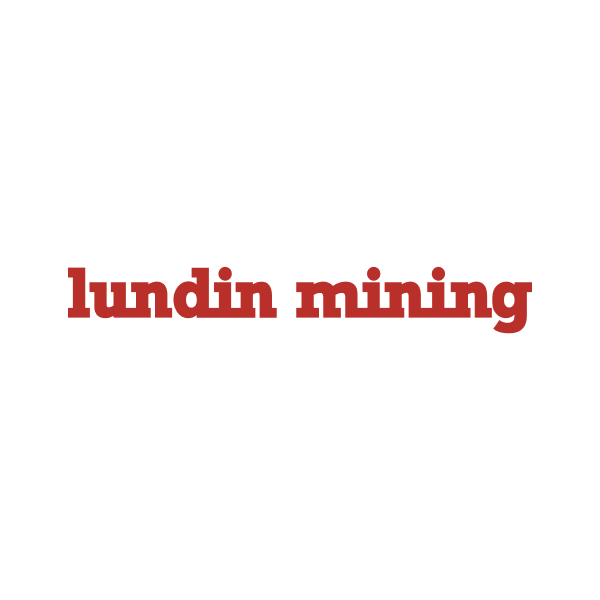
Ballard Power Systems Inc
TSX:BLDP


| US |

|
Johnson & Johnson
NYSE:JNJ
|
Pharmaceuticals
|
| US |

|
Berkshire Hathaway Inc
NYSE:BRK.A
|
Financial Services
|
| US |

|
Bank of America Corp
NYSE:BAC
|
Banking
|
| US |

|
Mastercard Inc
NYSE:MA
|
Technology
|
| US |

|
UnitedHealth Group Inc
NYSE:UNH
|
Health Care
|
| US |

|
Exxon Mobil Corp
NYSE:XOM
|
Energy
|
| US |

|
Pfizer Inc
NYSE:PFE
|
Pharmaceuticals
|
| US |

|
Palantir Technologies Inc
NYSE:PLTR
|
Technology
|
| US |

|
Nike Inc
NYSE:NKE
|
Textiles, Apparel & Luxury Goods
|
| US |

|
Visa Inc
NYSE:V
|
Technology
|
| CN |

|
Alibaba Group Holding Ltd
NYSE:BABA
|
Retail
|
| US |

|
JPMorgan Chase & Co
NYSE:JPM
|
Banking
|
| US |

|
Coca-Cola Co
NYSE:KO
|
Beverages
|
| US |

|
Walmart Inc
NYSE:WMT
|
Retail
|
| US |

|
Verizon Communications Inc
NYSE:VZ
|
Telecommunication
|
| US |

|
Chevron Corp
NYSE:CVX
|
Energy
|
Utilize notes to systematically review your investment decisions. By reflecting on past outcomes, you can discern effective strategies and identify those that underperformed. This continuous feedback loop enables you to adapt and refine your approach, optimizing for future success.
Each note serves as a learning point, offering insights into your decision-making processes. Over time, you'll accumulate a personalized database of knowledge, enhancing your ability to make informed decisions quickly and effectively.
With a comprehensive record of your investment history at your fingertips, you can compare current opportunities against past experiences. This not only bolsters your confidence but also ensures that each decision is grounded in a well-documented rationale.
Do you really want to delete this note?
This action cannot be undone.

| 52 Week Range |
1.45
5.59
|
| Price Target |
|
We'll email you a reminder when the closing price reaches CAD.
Choose the stock you wish to monitor with a price alert.

|
Johnson & Johnson
NYSE:JNJ
|
US |

|
Berkshire Hathaway Inc
NYSE:BRK.A
|
US |

|
Bank of America Corp
NYSE:BAC
|
US |

|
Mastercard Inc
NYSE:MA
|
US |

|
UnitedHealth Group Inc
NYSE:UNH
|
US |

|
Exxon Mobil Corp
NYSE:XOM
|
US |

|
Pfizer Inc
NYSE:PFE
|
US |

|
Palantir Technologies Inc
NYSE:PLTR
|
US |

|
Nike Inc
NYSE:NKE
|
US |

|
Visa Inc
NYSE:V
|
US |

|
Alibaba Group Holding Ltd
NYSE:BABA
|
CN |

|
JPMorgan Chase & Co
NYSE:JPM
|
US |

|
Coca-Cola Co
NYSE:KO
|
US |

|
Walmart Inc
NYSE:WMT
|
US |

|
Verizon Communications Inc
NYSE:VZ
|
US |

|
Chevron Corp
NYSE:CVX
|
US |
This alert will be permanently deleted.
Ballard Power Systems Inc
Ballard Power Systems, Inc. engages in the design, development, manufacture, sale, and service of fuel cell products for a variety of applications. The company is headquartered in Burnaby, British Columbia and currently employs 1,367 full-time employees. The firm is focused on the power product markets of Heavy-Duty Motive (consisting of bus, truck, rail and marine applications), Material Handling and Backup Power, as well as the delivery of Technology Solutions, including engineering services, technology transfer, and the license and sale of the Company’s intellectual property portfolio and fundamental knowledge for a variety of PEM fuel cell applications. The Company’s fuel cell is an environmentally clean electrochemical device that combines hydrogen fuel with oxygen (from the air) to produce electricity.

Ballard Power Systems, Inc. engages in the design, development, manufacture, sale, and service of fuel cell products for a variety of applications. The company is headquartered in Burnaby, British Columbia and currently employs 1,367 full-time employees. The firm is focused on the power product markets of Heavy-Duty Motive (consisting of bus, truck, rail and marine applications), Material Handling and Backup Power, as well as the delivery of Technology Solutions, including engineering services, technology transfer, and the license and sale of the Company’s intellectual property portfolio and fundamental knowledge for a variety of PEM fuel cell applications. The Company’s fuel cell is an environmentally clean electrochemical device that combines hydrogen fuel with oxygen (from the air) to produce electricity.
Revenue Growth: Revenue jumped 120% year-over-year to $32.5 million, mainly driven by deliveries to the bus and rail segments.
Gross Margin Improvement: Gross margin turned positive at 15%, up from negative 56% a year ago, helped by lower product costs and a reduction in onerous contracts.
Cost Controls: Operating expenses dropped 36% year-over-year, and cash operating costs fell 40% due to recent restructuring.
Order Momentum: Net order intake was about $19 million, with the largest-ever marine order booked at 6.4 megawatts.
Strategic Changes: Ballard decided not to pursue the Texas gigafactory, citing sufficient current manufacturing capacity and a commitment to capital discipline.
Outlook: Management expects further gross margin improvement and continued focus on cost discipline, but did not provide specific revenue or margin guidance.



































